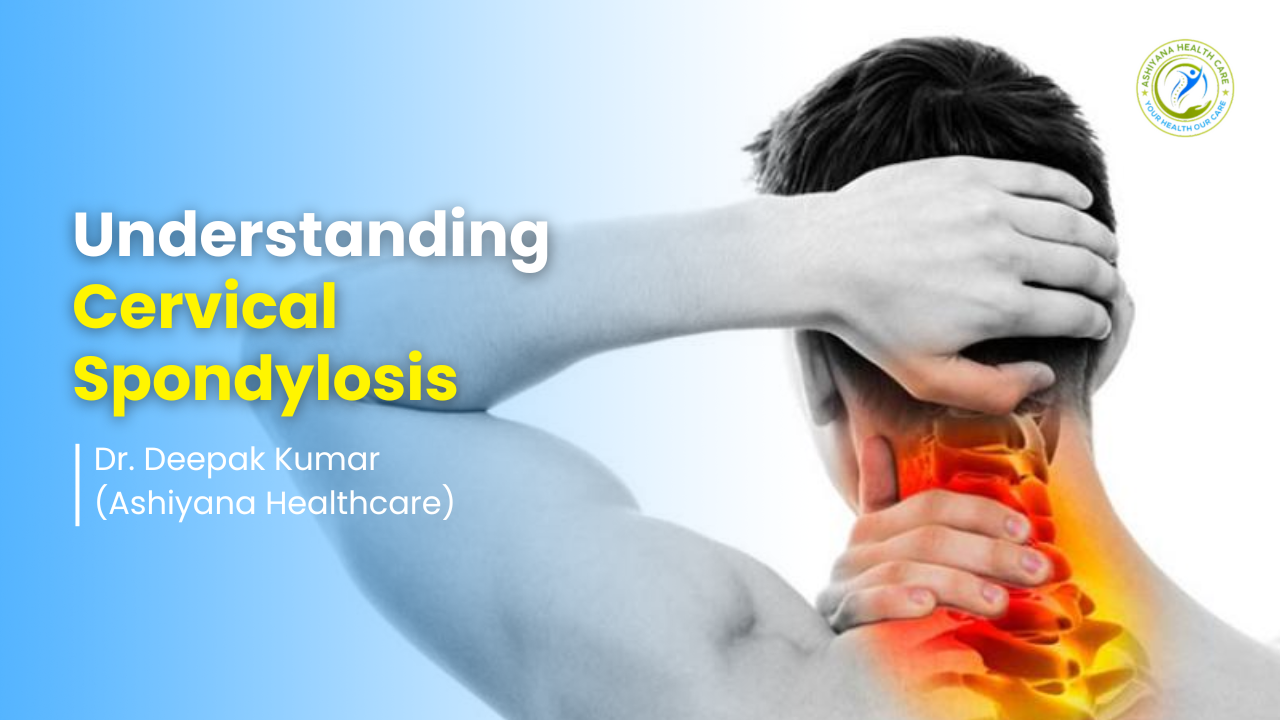
Understanding Cervical Spondylosis: Causes, Symptoms, and Treatment Options
Introduction
Cervical spondylosis, commonly known as neck arthritis, is a degenerative condition that affects the cervical spine. It occurs due to the wear and tear of bones, discs, and joints in the neck over time. While it is more common in older adults, younger individuals leading sedentary lifestyles are also increasingly affected. Understanding the causes, symptoms, and treatment options can help manage the condition effectively.
Causes of Cervical Spondylosis
Cervical spondylosis develops due to multiple factors, including:
1. Aging
With age, the spinal discs lose hydration and elasticity, leading to their gradual deterioration. This results in stiffness and reduced flexibility of the neck.
2. Poor Posture
Spending long hours in a slouched position, particularly while using mobile phones, laptops, or desktops, can strain the neck muscles and contribute to cervical spondylosis.
3. Injury
Previous neck injuries from accidents or sports activities can accelerate the degeneration of cervical vertebrae, making individuals more susceptible to this condition.
4. Genetic Factors
A family history of cervical spondylosis increases the likelihood of developing the condition.
5. Sedentary Lifestyle
Lack of physical activity and prolonged sitting can weaken neck muscles, making them prone to stiffness and pain.
Symptoms of Cervical Spondylosis
Symptoms of cervical spondylosis may vary in severity and can include:
1. Neck Pain and Stiffness
One of the most common symptoms is persistent pain and stiffness in the neck, which may worsen with movement.
2. Headaches
Pain that originates in the neck and radiates to the back of the head is another frequent symptom.
3. Muscle Weakness
Weakness in the arms, shoulders, or hands due to nerve compression is a potential sign of cervical spondylosis.
4. Tingling or Numbness
A tingling sensation or numbness in the arms and fingers occurs when nerves in the cervical spine are compressed.
5. Loss of Balance
Severe cases can lead to balance problems and difficulty walking due to spinal cord compression.
Diagnosis of Cervical Spondylosis
If you experience persistent neck pain or other symptoms, a medical consultation is crucial. A doctor may perform:
1. Physical Examination
Assessing neck movement, reflexes, and muscle strength to determine the severity of the condition.
2. Imaging Tests
- X-rays – Reveal bone spurs and structural changes in the spine.
- MRI Scans – Provide detailed images of soft tissues, nerves, and spinal cord.
- CT Scans – Offer a more comprehensive view of the spine.
3. Nerve Function Tests
Electromyography (EMG) and nerve conduction studies can determine nerve compression and muscle functionality.
Treatment Options for Cervical Spondylosis
Treatment varies depending on the severity of the condition. It ranges from home remedies to medical interventions.
1. Lifestyle Modifications
- Maintain good posture while sitting, working, or using electronic devices.
- Take frequent breaks to stretch and relax the neck muscles.
- Avoid carrying heavy loads that strain the neck.
2. Home Remedies
- Applying Heat or Ice Packs – Heat can ease muscle stiffness, while ice helps reduce inflammation.
- Gentle Neck Exercises – Stretching and strengthening exercises can improve flexibility and reduce pain.
3. Medications
- Pain Relievers – Over-the-counter drugs like ibuprofen and acetaminophen help relieve pain.
- Muscle Relaxants – Doctors may prescribe medications like cyclobenzaprine to reduce muscle spasms.
- Steroid Injections – In severe cases, corticosteroid injections may be recommended to reduce inflammation.
4. Physical Therapy
A physiotherapist can design a personalized exercise plan to strengthen neck muscles, improve posture, and enhance mobility.
5. Alternative Therapies
- Acupuncture – Stimulates nerves and muscles to relieve pain.
- Chiropractic Care – Spinal adjustments may improve mobility and reduce stiffness.
- Massage Therapy – Helps alleviate tension and improve blood circulation.
6. Surgery (In Severe Cases)
Surgery is considered only when conservative treatments fail, and symptoms worsen. Procedures like spinal fusion, decompression surgery, or disc replacement may be recommended.
Preventive Measures
Preventing cervical spondylosis is possible by adopting healthy habits:
- Maintain Proper Posture – Keep your neck aligned with your spine while sitting and sleeping.
- Stay Physically Active – Engage in neck exercises and yoga to keep muscles flexible.
- Use Supportive Pillows – Opt for ergonomic pillows that support the natural curve of the neck.
- Limit Screen Time – Reduce prolonged use of mobile phones and computers.
- Hydrate Well – Proper hydration maintains spinal disc elasticity and prevents degeneration.
When to See a Doctor
Seek medical attention if:
- The pain persists for more than a few weeks.
- There is a loss of coordination or muscle weakness.
- Symptoms worsen despite home remedies.
- You experience difficulty in balance or frequent dizziness.
Conclusion
Cervical spondylosis is a common yet manageable condition. Early detection, lifestyle modifications, and medical intervention can significantly improve symptoms and prevent further complications. If you are experiencing persistent neck pain, visit Ashiyana Healthcare for expert diagnosis and treatment options to restore your spinal health and well-being.
0 Comments on Healthy environment...